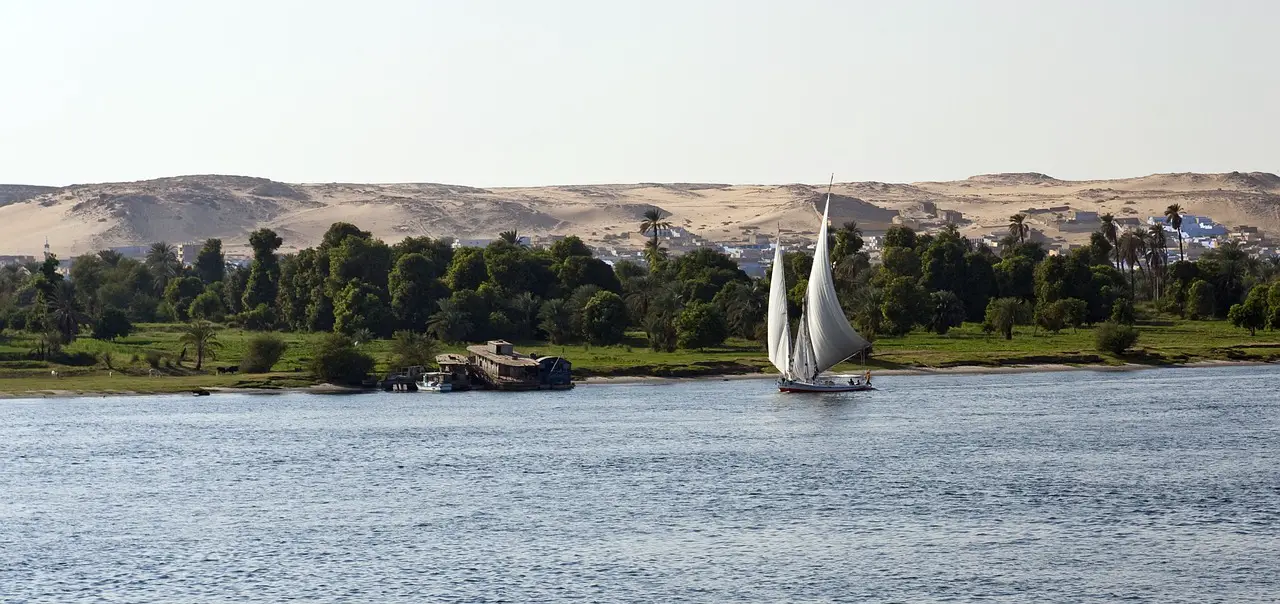
The Nile River is one of the most famous rivers in the world, known for its historical and cultural significance in Africa. While many people know about the Nile River, there are plenty of interesting facts that are less well-known. In this article, we will explore 7 interesting Nile River facts that will expand your knowledge and deepen your appreciation for this amazing body of water.
The Nile River is the longest in the world, measuring approximately 4,135 miles in length. It flows through 11 countries in northeastern Africa, including Tanzania, Uganda, Rwanda, Burundi, the Democratic Republic of the Congo, Kenya, Ethiopia, Eritrea, South Sudan, Sudan, and Egypt.
Table of Contents
Origin And Course Of The Nile River
Sources Of The Nile
The Nile River has two primary sources: the White Nile, which originates in Lake Victoria in Tanzania, and the Blue Nile, which originates in Ethiopia. The two rivers converge in Khartoum, Sudan, and flow together as one river into Egypt and eventually into the Mediterranean Sea.
Course Of The Nile
The Nile River flows northward through a narrow valley and eventually spreads out into the Nile Delta before emptying into the Mediterranean Sea. Along the way, it passes through several important cities, including Khartoum, Cairo, and Luxor.
Historical Significance Of The Nile
The Nile River has played a crucial role in the development of civilization and agriculture in northeastern Africa for thousands of years. Ancient Egyptians believed that the Nile was a god, and it was central to their religion and way of life. The Nile also served as a key transportation route, allowing goods and people to travel between different regions.
Wildlife And Environment Of The Nile River
Animals Of The Nile
The Nile River is home to a diverse array of wildlife, including crocodiles, hippos, and various species of fish, birds, and mammals. Many of these species are unique to the Nile River and its surrounding habitats.
Threats To The Nile Environment
The Nile River faces several threats to its ecosystem, including pollution, habitat destruction, and climate change. These threats have a significant impact on the health and sustainability of the river and its surrounding ecosystems.
Cultural Significance Of The Nile River
Ancient Egyptian culture And The Nile
The Nile River was central to ancient Egyptian culture, providing water for irrigation, transportation, and religious rituals. It was believed to be the source of all life and played a crucial role in the mythology and religion of ancient Egypt.
Nile River In Modern Culture
The Nile River continues to hold immense cultural significance, not just in Egypt but also in other countries it flows through. It remains a major tourist attraction, with millions of people visiting its banks each year to experience its beauty and history.
One of the most famous cultural events that take place along the Nile River is the Abu Simbel Sun Festival. This event occurs twice a year, on February 22nd and October 22nd, and it celebrates the sun’s alignment with the temple’s axis, illuminating the face of the statue of Ramses II. The temple of Abu Simbel is located in southern Egypt and is one of the most famous historical sites in the country.
The Nile River has also been the subject of numerous artistic and literary works throughout history. It has been featured in many films, books, and music, such as the classic movie “Death on the Nile” based on the book by Agatha Christie, and the song “The Nile Song” by Pink Floyd. The river has been a source of inspiration for many artists and has been a part of the cultural imagination of people around the world.